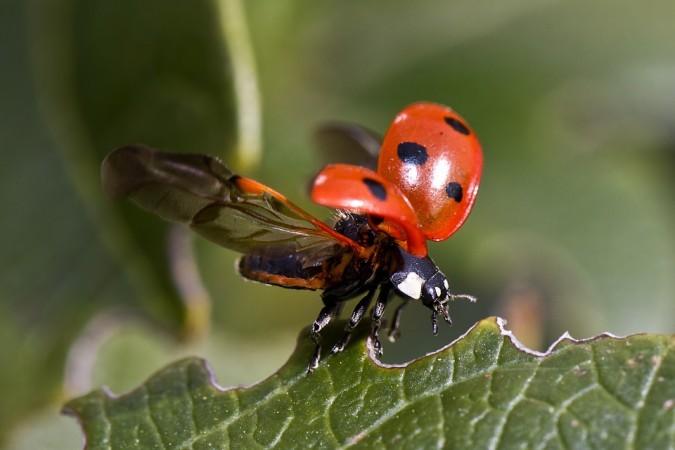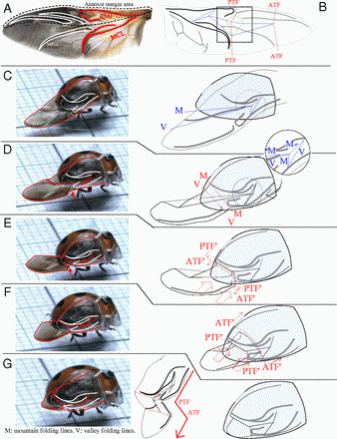
The hind wings of ladybugs will motivate designers and engineers to produce better devices and gadgets in the future.
Also Read: Pollen allergies, sinus, asthma and other nasal allergies: How to control them naturally
Ladybugs possess the ability to switch to flying from walking within a fraction of seconds, unlike most beetles. Much is not known about the agility of these tiny, high-mobility bugs, when they are done flying. They can be seen closing their little dotted wings before their large wings.
Researchers have found how exactly the process of wing-folding was carried out in their tiny wing cases, known as elytra. It was revealed that the ladybugs folded their large wings utilising a combination of elytra and abdominal movements. These bugs need to have elasticity and flexibility to carry out this wing-folding process.

"A CT scan of the ladybugs' wings revealed that this capability is possible thanks to the wings' natural design that involves thick and springy veins, allowing the wings to be stored up so tightly, and at the same time support the bugs' wings in flight," a Tech Times report stated.
"For researchers, this shows an incredible design — an unusual combination of deformability and strength," it added.
These pretty spotted bugs are now motivating engineers to devise advanced structures, satellite antenna reflectors, aircraft carriers' wings as well as an umbrella which would be stronger and more flexible.
"Umbrellas these days have joints that allow them to bend and fold, but ladybug wings could allow engineers and researchers to see a whole new point of view in regard to creating them without the need of joints or even moving parts," Kazuya Saito, the lead author of the study, was quoted as saying by Science World Report.
"The ladybug technique is especially important for researchers in the field or robotics, mechanics, aerospace and even mechanical engineering," he added.














